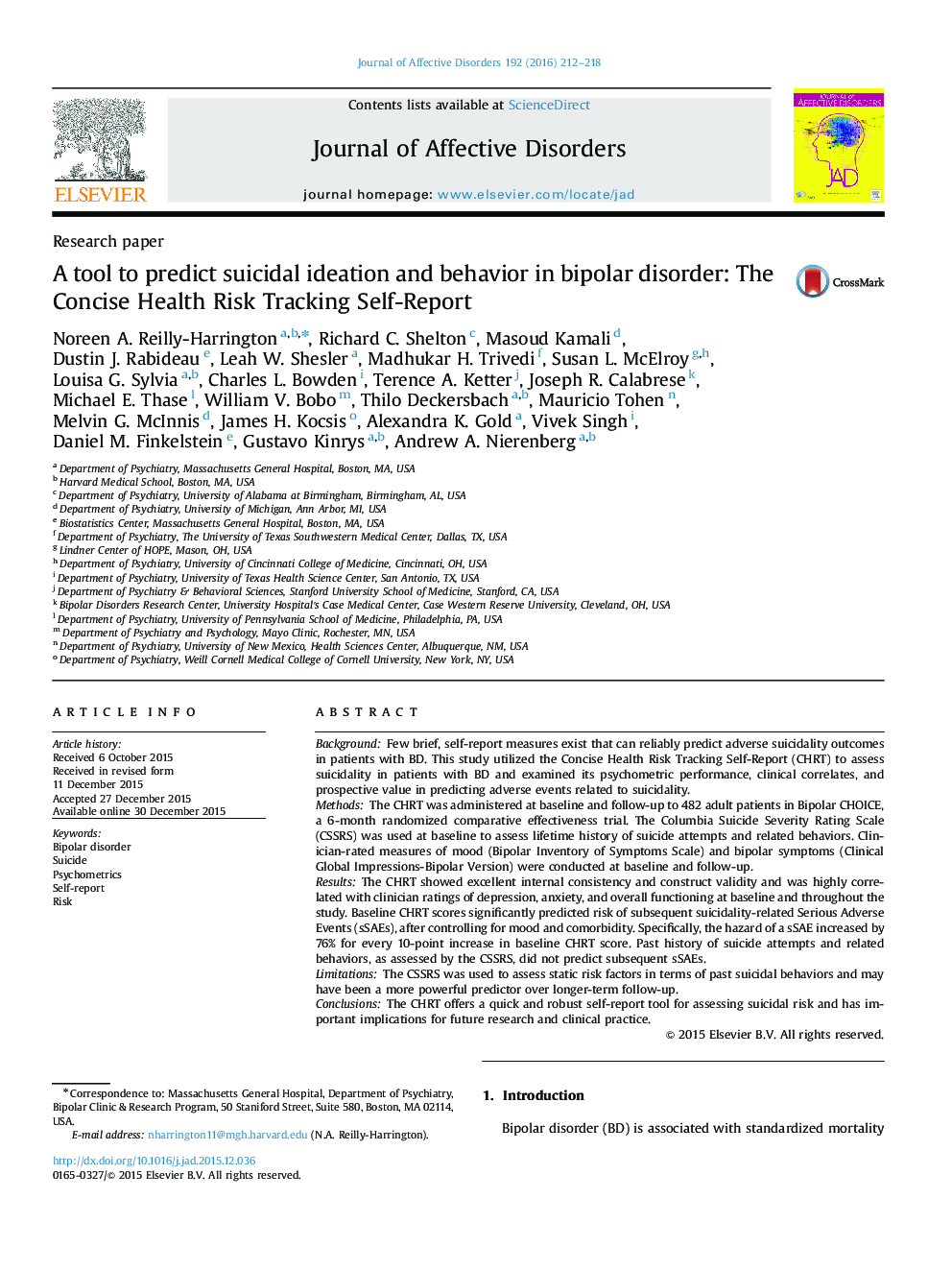| کد مقاله | کد نشریه | سال انتشار | مقاله انگلیسی | نسخه تمام متن |
|---|---|---|---|---|
| 6230633 | 1608133 | 2016 | 7 صفحه PDF | دانلود رایگان |
- The CHRT demonstrated excellent psychometric properties in our bipolar sample.
- The CHRT was highly correlated with other measures of suicidality at baseline.
- Baseline CHRT was a powerful predictor of subsequent suicide-related SAEs.
- Lifetime suicidal behaviors (CSSRS) did not predict subsequent suicidal SAEs.
- The CHRT is a quick and robust self-report tool for assessing suicidal risk.
BackgroundFew brief, self-report measures exist that can reliably predict adverse suicidality outcomes in patients with BD. This study utilized the Concise Health Risk Tracking Self-Report (CHRT) to assess suicidality in patients with BD and examined its psychometric performance, clinical correlates, and prospective value in predicting adverse events related to suicidality.MethodsThe CHRT was administered at baseline and follow-up to 482 adult patients in Bipolar CHOICE, a 6-month randomized comparative effectiveness trial. The Columbia Suicide Severity Rating Scale (CSSRS) was used at baseline to assess lifetime history of suicide attempts and related behaviors. Clinician-rated measures of mood (Bipolar Inventory of Symptoms Scale) and bipolar symptoms (Clinical Global Impressions-Bipolar Version) were conducted at baseline and follow-up.ResultsThe CHRT showed excellent internal consistency and construct validity and was highly correlated with clinician ratings of depression, anxiety, and overall functioning at baseline and throughout the study. Baseline CHRT scores significantly predicted risk of subsequent suicidality-related Serious Adverse Events (sSAEs), after controlling for mood and comorbidity. Specifically, the hazard of a sSAE increased by 76% for every 10-point increase in baseline CHRT score. Past history of suicide attempts and related behaviors, as assessed by the CSSRS, did not predict subsequent sSAEs.LimitationsThe CSSRS was used to assess static risk factors in terms of past suicidal behaviors and may have been a more powerful predictor over longer-term follow-up.ConclusionsThe CHRT offers a quick and robust self-report tool for assessing suicidal risk and has important implications for future research and clinical practice.
Journal: Journal of Affective Disorders - Volume 192, 1 March 2016, Pages 212-218
